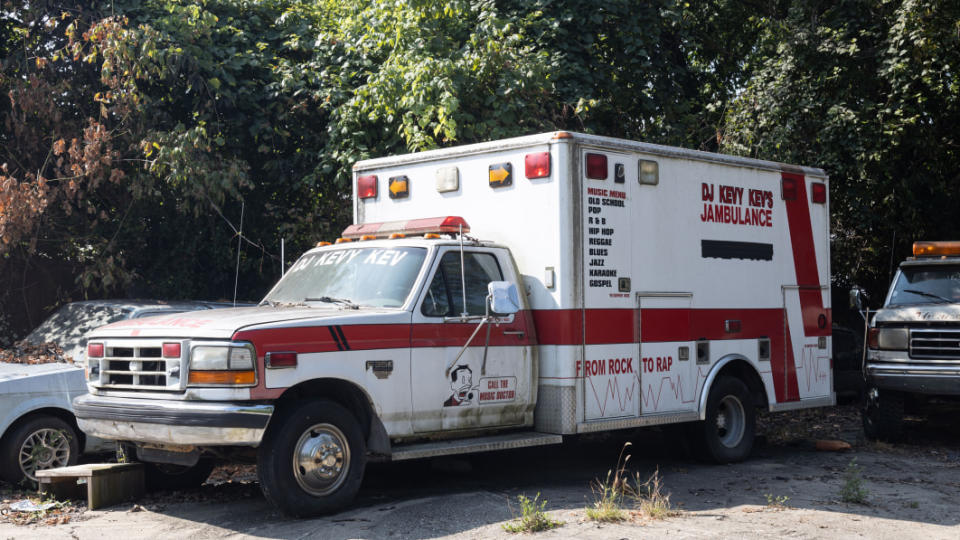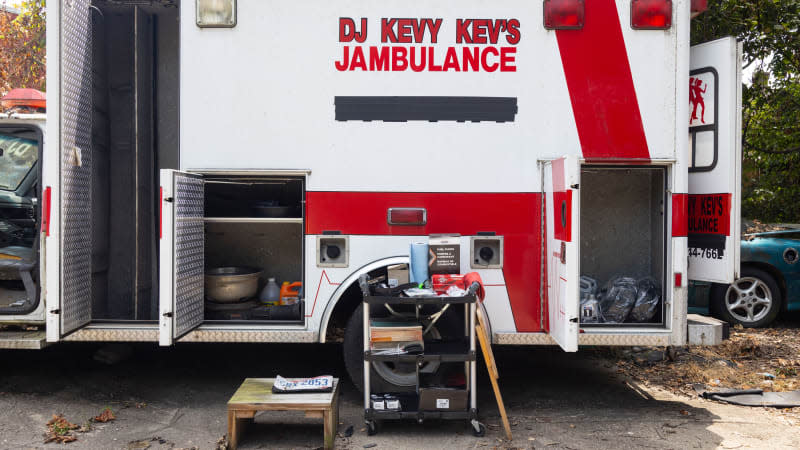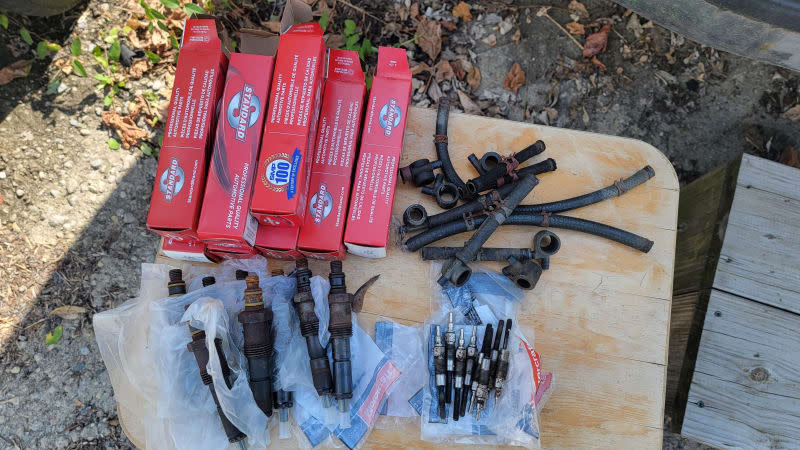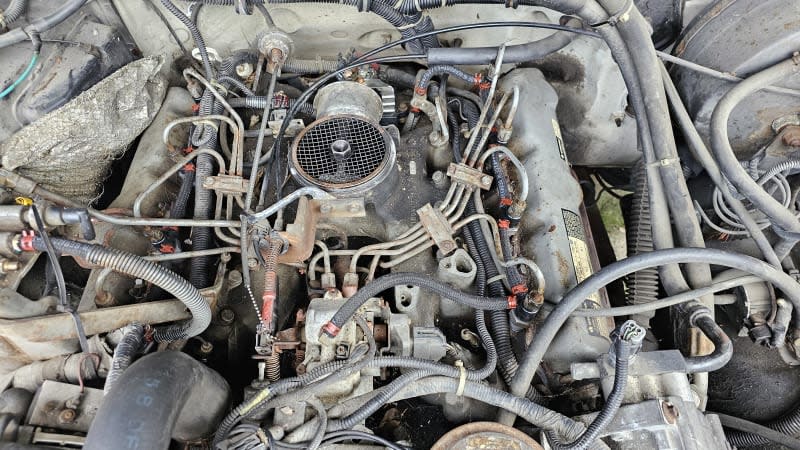Project Builds #2: The Jambulance, the wasps, and a piece of the Titanic

Well, this is not what I expected. Last summer, I had a bunch of project cars I'd committed to repair so that I could go on the adventures I purchased every project car for. However, instead of sacrificing my time to the gods of grease and torque wrenches, I got sunk in a family emergency that took six months to resolve. Here we are in February, the fires are put out — the heat, I can still feel — my adventure timeline is kaput, and it has been emphasized to me again that these jalopies aren't going to fix themselves. So I join the Brotherhood of Project Car Resolution-Makers for 2024, like these who wrote in to Jalopnik and those who work at The Drive. It's time find the time to atone for my neglect.
We'll start with The Jambulance, a Type I 1994 Ford F-350 ambulance. I bought it to convert into an overlander and drive to Tuktoyaktuk, Northwest Territories, Canada to visit an Inuit fellow I met six years ago. Thing is, I bought it at the beginning of 2021. Which, in February 2024, means I bought someone else's neglected project and made it my neglected project, sitting for 3.5 years in a tow yard impound lot by the Ohio River where I planned to work on it.

I did get to this one last year, before other matters sponged up my life. The situation was much better than I had any reason to hope for. In September, the worst part of cracking this old one open was the heat and the yellowjackets. The Jambulance had remained sealed enough to keep out every mammalian varmint and almost all insects. The wasps, as is their habit, wouldn’t be stopped. When I opened the driver’s door to pop the hood release, I saw a tiny home under construction inside the door edge. I never would have guessed how many of these striped berserkers hang around a mere pip of a nest.
They were kind enough not to go insane at my presence, I was kind enough to regret having to kill them. I grabbed a can of raid and hosed down the door, then ran. I gave any stragglers time to process their loss and move on, then went back out to take photos. On arrival, I noticed a smaller gang of wasps hanging around an even smaller, second nest. These psychopaths had watched their neighbors get napalmed by a kaiju and just … sat there. So they got some, too.
Another sprint, another intermission, then I got to work.
The Jambulance and all my gear were like a time capsule that happened to have been left above ground. I cleaned the filthy cart I’d stored in the shop three years ago, wiped down all the tools and the jack stands. I lifted the hood, the same red rag I’d placed on the intake when I started replacing glow plugs and injectors was still there. I emptied all the bays of parts. Inside the ambulance, I chuckled again at cabinets labeled "Teddy Bears” and "Masks" and decided I’ll always carry a small selection of both — fun masks this time, though. I wondered what's waiting for me in the bin labeled "Infectious Waste." Maybe some "Last of Us" mycelium. Or more wasps.
I cleared the exterior storage boxes, took some photos. Nothing, other than neglect, was amiss. The rig exhibits the light mossy sheen of a stone that hasn’t rolled. A great start. Now I had to get the thing started.
More to the point, I had to get it to start when asked, with the key. When I bought it, the 7.3-liter IDI (indirect injection) diesel V8 needed copious bursts of starter fluid to turn over. I'd had the glow plug relay done immediately after purchase, trying to remedy a repeated clicking noise during glow plug warmup and maybe get an easy pass to startup. That didn't work. So now I'd be redoing the glow plugs, injectors, and return lines. I'd purchased a kit with everything from Dieselogic, as well as six books in the factory shop manual series. Comparing the two, I discovered that the manual's instructions for replacing the return lines didn't match the line layout on the engine.

Oh well, I had the engine itself as my guide. One of the great aspects about working on old rigs is how easy they are to diagnose and how easy it is to see everything. Engineers, however — not even in 1994 — could resist the urge to make some parts exceedingly difficult to access, even on a truck this simple. I had eight glow plugs and eight injectors to deal with. Two of the injectors took longer to replace than the other 14 parts combined — the front left injector with a pintle atop that was microns away from the bargain basement fuel filter, and the rear right that did not want to accept the fuel line fitting at the end of the job. And that includes the time I had to spend fishing a brass washer out of its injector hole, tenderly unscrewing stubborn glow plugs that I prayed wouldn't snap in their holes, and learning the best order to reattach the ancient and persnickety fuel lines.


 Yahoo Autos
Yahoo Autos 
